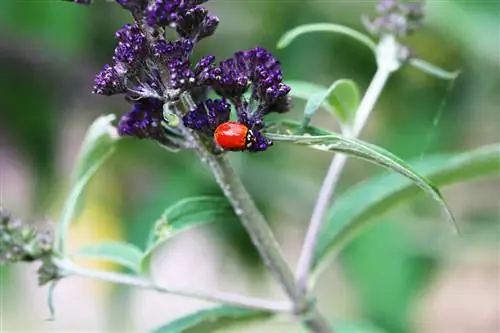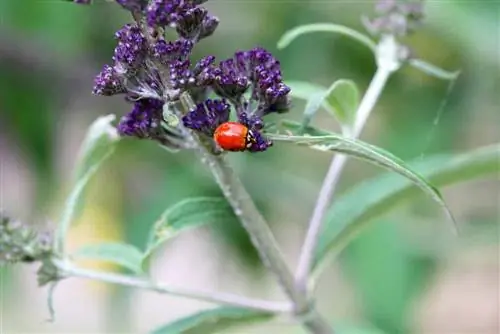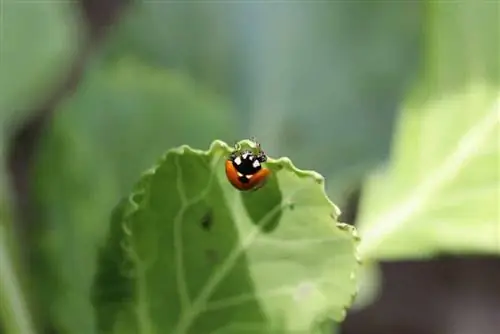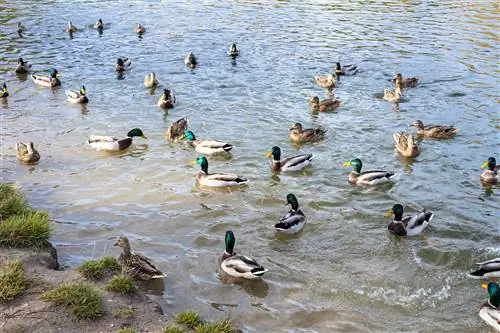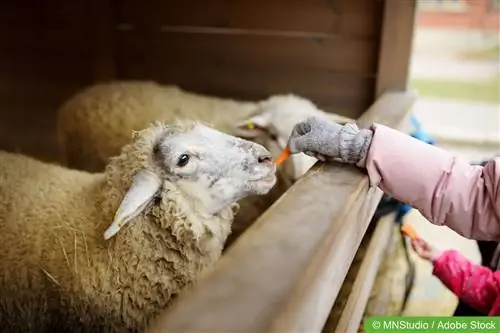- Author admin [email protected].
- Public 2023-12-17 03:39.
- Last modified 2025-01-24 12:45.
Ladybirds are among the most popular and well-known insects of all. For some gardeners, the question arises as to what else the beetles actually like to eat besides aphids or whether they need something to drink.
Ladybird species (family Coccinellinae)
The best known are the seven-point (Coccinella septempunctata) and the two-point (Adalia bipunctata). Ladybugs are almost always named for the number of spots on their elytra. The basic color can be red or yellow, rarely black. There are some species completely without points. Some beetles are so variable in their coloring that it is difficult to distinguish between individual species.
Note:
For several years now, the Asian lady beetle (Harmonia axyridis) has become more and more common and is competing with the native species. Due to various characteristics, it can reproduce and survive better than its European relatives.
Aphids
Most ladybird species feed on aphids and their larvae. They consume large quantities of the pests. While native lady beetles eat up to 60 aphids per day, the Asian lady beetle mentioned above can easily eat up to 270 aphids per day. Ladybugs can decimate an aphid colony in a very short time. Not only do the beetles themselves eat the lice, the larvae are also very hard-working pest killers.
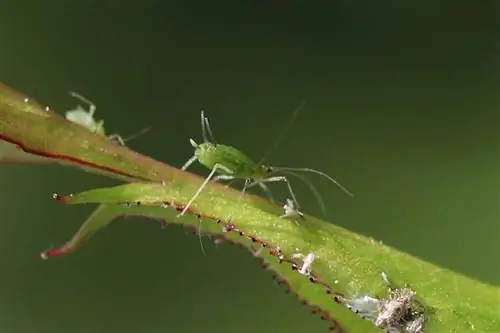
Note:
It is always worthwhile for gardeners to have as many ladybirds as possible in the garden and to encourage them.
Not every species of ladybird hunts for aphids on every plant. In fact, some of the beetle species are specialized on certain lice or plants. There are a lot of ladybirds on coniferous trees that hunt conifer aphids.
Other insects
In addition to aphids, the diet of ladybirds also includes other soft and small insects:
- Larvae of sawflies, butterflies and other beetles
- Scale insects
- some smaller species of bugs
A crucial factor when choosing food is its availability. Ladybugs are then not particularly picky and eat what they can reach or hunt. The same applies to the larvae of beetles.
Other diets
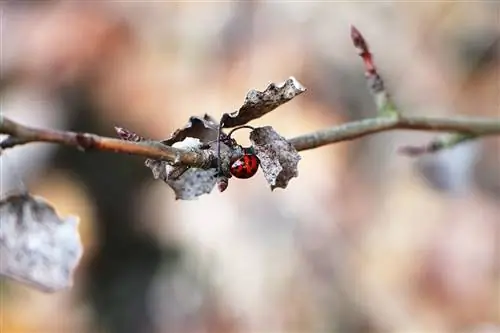
In addition to the ladybirds, which mainly eat insects, there are also some species that have a different diet. However, these are rarer and less conspicuous than an aphid colony with ladybirds.
- Twenty-Four Point (Subcoccinella vigintiquatuorpunctata): Plants (alfalfa, carnations, clover, potatoes), can cause severe damage
- Spruce ball ladybird(Scymnus abietis): in addition to aphids also mites
- Black ball ladybird (Stethorus punctillum): spider mites
- Twentytwopoint (Psyllobora vigintiduopunctata): Mildew
- Sixteen-spotted ladybird (Halyzia sedecimguttata): mildew
Cannibalism
Many species of ladybirds behave cannibalistically towards eggs and larvae of their own species. This means that it doesn't make much of a difference whether they continue to eat aphids or whether they prefer to eat the eggs or even the larvae of another ladybird. What they cannot do because of their hard elytra is eat other adult ladybirds. The same applies to other beetle species. Cannibalism within their own species is very disastrous for ladybugs because it infects them with parasites that can kill them.
Water requirements
Ladybirds, like other animals, have a certain fluid requirement. However, this is often breastfed in a completely natural way. On less dry days, the moisture of the prey is sufficient. The beetles can also ingest dew or raindrops. It is not necessary to offer ladybugs a special insect potion in the garden. Especially since watering holes often become traps for insects in which they can drown. Much more helpful are moist areas in the garden that do not dry out even in dry conditions and are overgrown with dense moss. All kinds of insects can get their fluids there.
Note:
If it is to be a watering hole for insects, it must be secured against drowning with several large stones, wood or moss.

